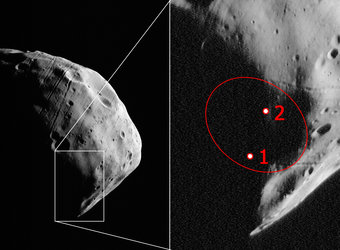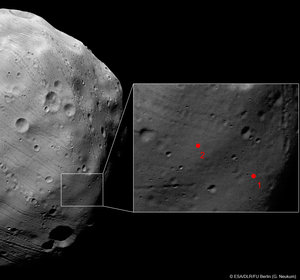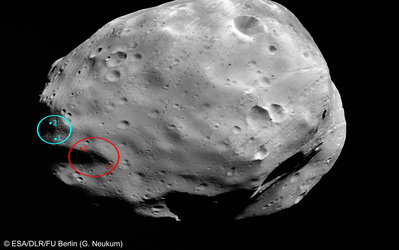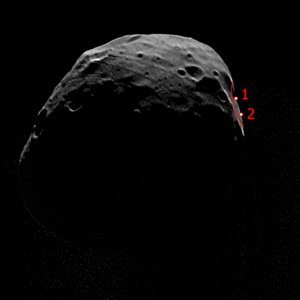
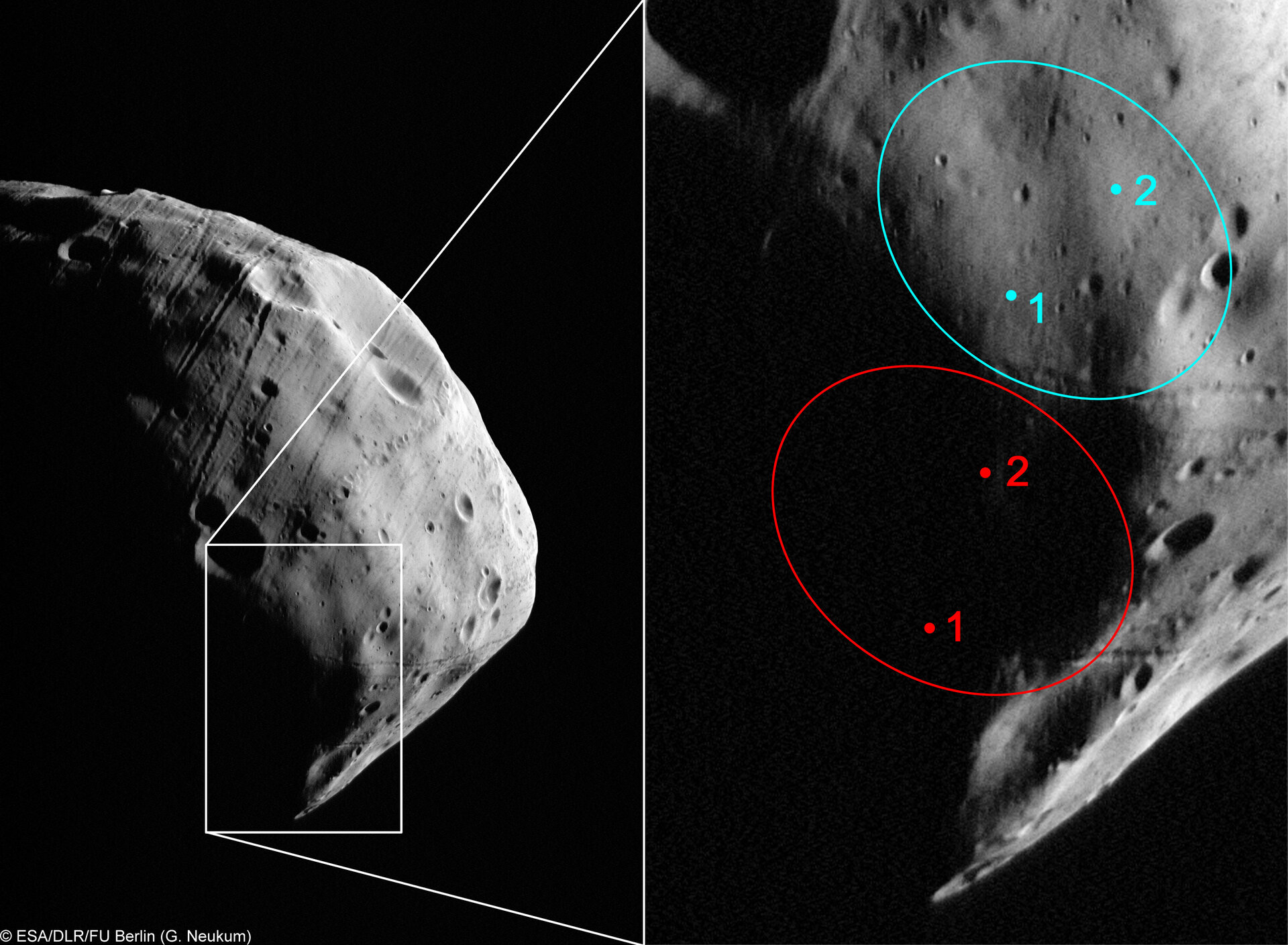
HRSC’s zoom in on Phobos-Grunt landing site
This image was obtained by the High Resolution Stereo Camera (HRSC) on board ESA’s Mars Express on 23 July 2008 (orbit 5851), at a distance of 93 km from the moon’s centre. The image was taken using the camera’s stereo-1 channel, at a resolution of 3.7 m/pixel.
The ellipses show the previously (red) and currently (blue) considered landing sites for the Phobos-Grunt Russian mission: based on Mars Express’ image series, the Russian Federal Space Agency is now considering to move the landing location slightly to the north of the previous one, to a safer area located between 7°-21°S and 214°-233°W.
Phobos-Grunt (meaning Phobos Soil) will land on Phobos, collect a soil sample and return it to Earth for analysis. The landing site has been selected to be on the side of the moon facing away from Mars - a place now only imaged by Mars Express after the Viking orbiters in the 1970s.

